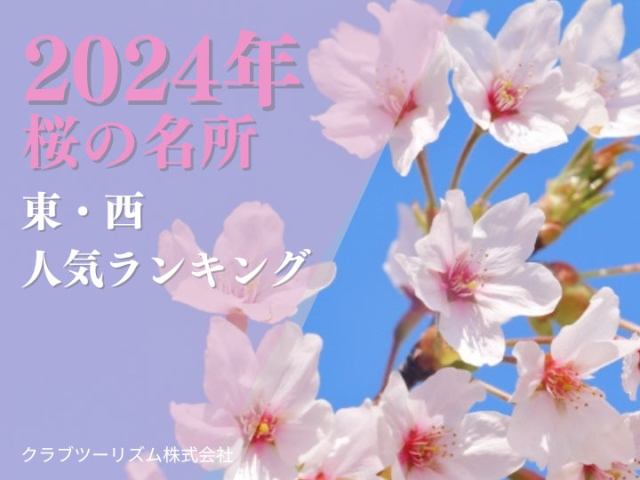
Here are the most popular picks for cherry blossom-viewing in both eastern and western Japan, based on bookings.
With the latest cherry blossom forecast in Japan predicting slightly later blossoming times than initially predicted, travelers in Japan are gearing up for travels to see the best and most beautiful sakura across the country–whether by means of personal travel or professional flower-viewing tours. Japanese travel agency Club Tourism is one such entity that is currently offering no fewer than 124 specialized travel tours with “sakura” in the title on its website. That may already seem like a lot, but the agency further revealed that reservations for these tours are up 152.9 percent this year compared to last year.
So what are the most in-demand sakura sightseeing spots across Japan? Club Tourism revealed its list of locations with the highest number of tour reservations scheduled to depart between March 1 and May 10, the period during which sakura typically reach their peak in most places of the country. The list is also broken into two regions, eastern and western Japan, in case you’d like to try to hit up multiple locations during the same trip.
Eastern Japan Rankings
The timeframe denoted in parentheses refers to when the sakura at that location are typically in bloom.
10. Yamataka Jindaizakura, Yamanashi Prefecture (early April through late April)
9. Mishima Taisha, Shizuoka Prefecture (late March through early April)
8. Arakurayama Sengen Park, Yamanashi Prefecture (early April through mid-April)
7. Oigawa Railway, Shizuoka Prefecture (late March through early April)
6. Kuonji, Yamanashi Prefecture (early April through mid-April)
5. Kamakura, Kanagawa Prefecture (late March through late April)
4. Hirosaki Park, Aomori Prefecture (late April through early May)
3. Miharu Takizakura, Fukushima Prefecture (mid-April through late April)
▼ Miharu Takizakura, Fukushima Prefecture
This weeping cherry tree in Miharu, Fukushima is over 1,000 years old and is designated one of the Three Giant Cherry Trees of Japan. The “taki” in its name refers to a waterfall, as its boughs and branches spread out and appear to overflow with rivulets of blossoms.
2. Kakunodate, Akita Prefecture (late April through early May)
▼ Kakunodate, Akita Prefecture
Kakunodate is a town in northern Akita, nicknamed “Michinoku’s Little Kyoto” (Michinoku is the name given to the north-eastern Tohoku region) due to its wealth of preserved historical structures. In particular, a road of former samurai residences with 400 weeping cherry trees (162 of which are designated as Natural Monuments of Japan) lining either side the street is one of the most famous sakura spots in all of the region. The sakura trees flanking the nearby Hinokinai River are another spectacular sight to behold.
1. Takato Joshi Park, Nagano Prefecture (early April through mid-April)
▼ Takato Joshi Park, Nagano Prefecture
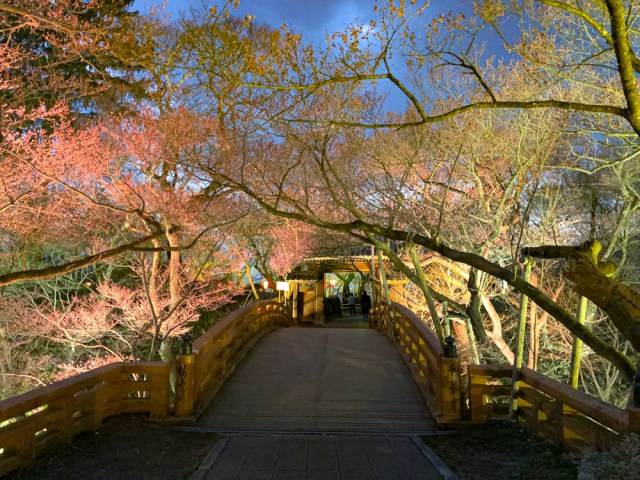
Sometimes dubbed the best place to view cherry blossoms in the whole country, Takato Joshi Park in Nagano is the site of the former Takato Castle. Today, visitors can enjoy breathtaking views of the Japanese Alps between the endless pink blossoms. Local officials estimated that approximately 110,000 people visited the park last year during cherry blossom season after pandemic eating and drinking restrictions were finally lifted.
Western Japan Rankings
The timeframe denoted in parentheses refers to when the sakura at that location are typically in bloom.
10. Takeda Castle Ruins, Hyogo Prefecture (early April through mid-April)
9. Kumamoto Castle, Kumamoto Prefecture (late March through early April)
8. Lake Biwa, Shiga Prefecture (early April through mid-April)
7. Nabana no Sato Flower Garden, Mie Prefecture (late March through mid-April)
6. Sagano Romantic Train, Kyoto Prefecture (late March through early April)
5. Daigozakura, Okayama Prefecture (early April through mid-April)
4. Mount Koya, Wakayama Prefecture (mid-April through late April)
3. Itsukushima Jinja, Hiroshima Prefecture (late March through early April)
▼ Itsukushima Jinja, Hiroshima Prefecture
One of Japan’s most iconic images is the vermillion red torii gate of UNESCO World Heritage Site Itsukushima Shrine rising out of the water in Hiroshima. If you stand on the shrine complex’s western area hill by the two-storied Tahoto Pagoda in the spring, you can look down on the blossoms of 1,900 cherry trees of all different varieties overlooking the torii. Now is also the perfect time for a visit since the famous gate is fully visible again for the first time in 3.5 years after undergoing restoration work.
2. Himeji Castle, Hyogo Prefecture (late March through early April)
▼ Himeji Castle, Hyogo Prefecture
Himeji, often nicknamed “White Egret Castle” for its graceful design, is Japan’s largest and most visited castle. If possible, it’s an even more elegant sight indeed when seen rising above a sea of cherry blossoms. Also easily accessible for travelers in western Japan, Himeji Station in Hyogo is only a 30-minute bullet train ride from Shin-Osaka Station.
1. Mount Yoshino, Nara Prefecture (early April through late April)
▼ Mount Yoshino, Nara Prefecture
Often regarded as Japan’s most famous sakura-viewing spot, Mount Yoshino in Nara boasts 30,000 sakura trees divided into four areas at different elevations that bloom at slightly different times over a three-week span. As a sign of its popularity, Club Tourism revealed that sakura tours on Mount Yoshino received over twice as many bookings as tours at the second-place finisher Himeji Castle. It’s said that 1,300 years ago, locals began donating the sakura saplings to Kinpusenji Temple, an important temple located on the mountain dedicated to the syncretic mountain worship religion Shugendo.
On a final note, if you’ll be in the Tokyo area over the next month and prefer to enjoy the sakura locally, you may be interested in reserving a sakura taxi tour instead.
Source: PR Times
Top image: PR Times
Insert images: PR Times, Pakutaso (1, 2)
● Want to hear about SoraNews24’s latest articles as soon as they’re published? Follow us on Facebook and Twitter!
[ Read in Japanese ]

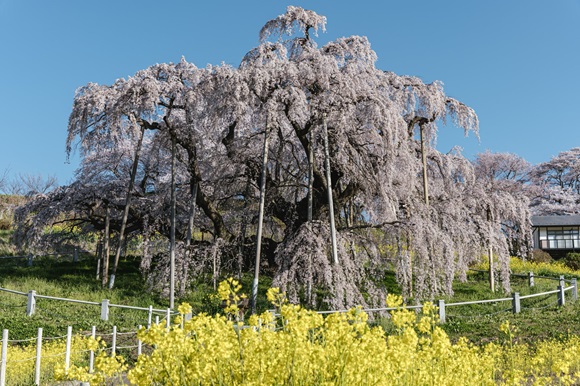
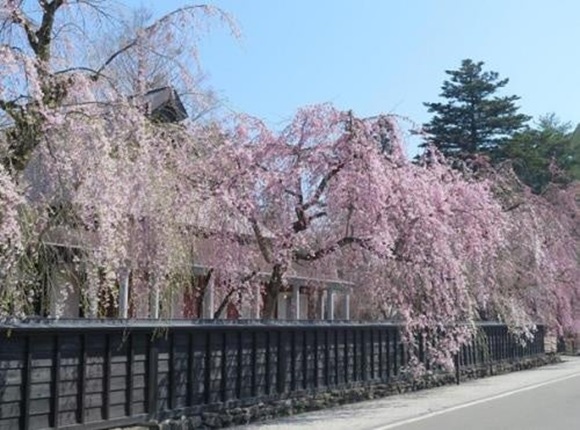
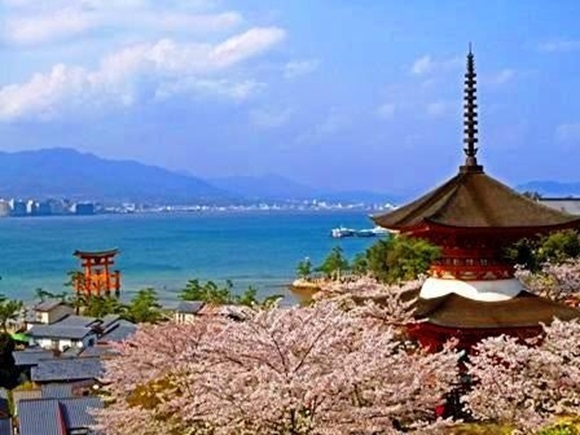
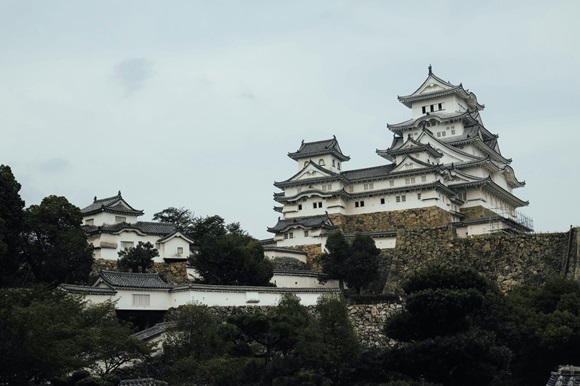
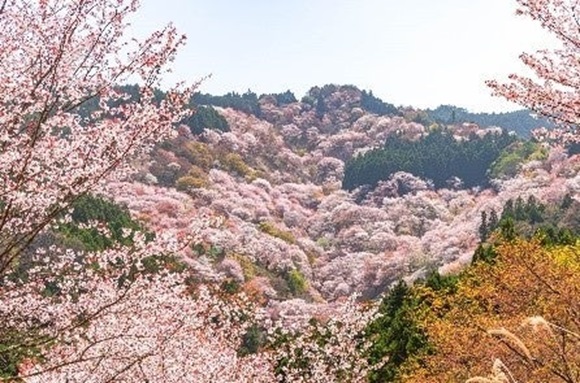
 Sakura 2017: The best places to see cherry blossoms in Japan
Sakura 2017: The best places to see cherry blossoms in Japan Sakura in Japan 2019: The best spots for hanami cherry blossom viewing
Sakura in Japan 2019: The best spots for hanami cherry blossom viewing Japan’s top 10 open-air hot spring baths with cherry blossom views【Survey】
Japan’s top 10 open-air hot spring baths with cherry blossom views【Survey】 Updated cherry blossom forecast shows extra-long sakura season for Japan this year
Updated cherry blossom forecast shows extra-long sakura season for Japan this year Updated cherry blossom forecast moves up blooming date, predicts sakura season start for Ueno Park
Updated cherry blossom forecast moves up blooming date, predicts sakura season start for Ueno Park Rakuten randomly offers 58 New Year’s osechi feasts in Japan, but did we get a star or a dud?
Rakuten randomly offers 58 New Year’s osechi feasts in Japan, but did we get a star or a dud? Things get heavy with the Gold Lucky Bag from Village Vanguard
Things get heavy with the Gold Lucky Bag from Village Vanguard Blackboard art contest produces entries that will take your breath away
Blackboard art contest produces entries that will take your breath away Tokyo station platform to transform into sake bar with hot drinks, hot oden, and hot kotatsu
Tokyo station platform to transform into sake bar with hot drinks, hot oden, and hot kotatsu Married couples in Japan must have the same surname, so does Mr. Sato regret taking his wife’s?
Married couples in Japan must have the same surname, so does Mr. Sato regret taking his wife’s? Village Vanguard’s “dangerous” lucky bag promises thrilling highs and miserable lows
Village Vanguard’s “dangerous” lucky bag promises thrilling highs and miserable lows Tokyo fish market breaks New Year auction record as single fish sells for over 500 million yen【Vid】
Tokyo fish market breaks New Year auction record as single fish sells for over 500 million yen【Vid】 White Curry Udon: A new take on noodles discovered at a Japanese airport
White Curry Udon: A new take on noodles discovered at a Japanese airport Tokyo DisneySea’s new Fantasy Springs area: Peter Pan’s Never Land has the best ride of all
Tokyo DisneySea’s new Fantasy Springs area: Peter Pan’s Never Land has the best ride of all Latest Japan cherry blossom forecast pushes Tokyo date back, sakura now expected first elsewhere
Latest Japan cherry blossom forecast pushes Tokyo date back, sakura now expected first elsewhere Starbucks Japan ready to get Year of the Horse started with adorable drinkware and plushies【Pics】
Starbucks Japan ready to get Year of the Horse started with adorable drinkware and plushies【Pics】 Japanese beef bowl chain Sukiya’s 2026 Smile Box lucky bag basically pays for itself
Japanese beef bowl chain Sukiya’s 2026 Smile Box lucky bag basically pays for itself Hayao Miyazaki says Happy New Year to Studio Ghibli fans with new art for Year of the Horse
Hayao Miyazaki says Happy New Year to Studio Ghibli fans with new art for Year of the Horse Cup Noodle tries an authentic Jiro-style ramen, but something’s not quite right
Cup Noodle tries an authentic Jiro-style ramen, but something’s not quite right The best Starbucks Japan Frappuccinos we want to drink again in 2026
The best Starbucks Japan Frappuccinos we want to drink again in 2026 We revisited Sweets Paradise after a decade to see if Japan’s dessert buffet still delivers
We revisited Sweets Paradise after a decade to see if Japan’s dessert buffet still delivers That time Seiji called JASRAC to ask why he didn’t get paid royalties for his song being on TV
That time Seiji called JASRAC to ask why he didn’t get paid royalties for his song being on TV We found possibly the quietest Japanese-style hotel in Tokyo’s bustling Shinjuku district
We found possibly the quietest Japanese-style hotel in Tokyo’s bustling Shinjuku district Pizza Hut Japan’s hot lucky bags are perfect for a New Year’s pizza party
Pizza Hut Japan’s hot lucky bags are perfect for a New Year’s pizza party Japan’s oldest largetooth sawfish in captivity back on display in Mie Prefecture
Japan’s oldest largetooth sawfish in captivity back on display in Mie Prefecture 7-Eleven Japan starts new temporary luggage storage service in over 300 branches
7-Eleven Japan starts new temporary luggage storage service in over 300 branches Disillusionment at Tsukiji’s tourist-target prices led us to a great ramen restaurant in Tokyo
Disillusionment at Tsukiji’s tourist-target prices led us to a great ramen restaurant in Tokyo Starbucks teams up with 166-year-old Kyoto doll maker for Year of the Horse decorations【Photos】
Starbucks teams up with 166-year-old Kyoto doll maker for Year of the Horse decorations【Photos】 Tokyo considering law requiring more trash cans following litter increase in heavily touristed area
Tokyo considering law requiring more trash cans following litter increase in heavily touristed area Tokyo’s Tsukiji sushi neighborhood asks tour groups to stay away for the rest of the month
Tokyo’s Tsukiji sushi neighborhood asks tour groups to stay away for the rest of the month Tokyo event lets you travel back in time, for free, to celebrate 100 years since Showa era start
Tokyo event lets you travel back in time, for free, to celebrate 100 years since Showa era start Japan may add Japanese language proficiency, lifestyle classes to permanent foreign resident requirements
Japan may add Japanese language proficiency, lifestyle classes to permanent foreign resident requirements Sanrio theme park in Japan announces plans to expand into a Sanrio resort
Sanrio theme park in Japan announces plans to expand into a Sanrio resort Stamina-destroying “Paralysis Noodles” are Tokyo’s newest over-the-top ramen innovation
Stamina-destroying “Paralysis Noodles” are Tokyo’s newest over-the-top ramen innovation Survey asks foreign tourists what bothered them in Japan, more than half gave same answer
Survey asks foreign tourists what bothered them in Japan, more than half gave same answer Japan’s human washing machines will go on sale to general public, demos to be held in Tokyo
Japan’s human washing machines will go on sale to general public, demos to be held in Tokyo Japan’s deadliest food claims more victims, but why do people keep eating it for New Year’s?
Japan’s deadliest food claims more victims, but why do people keep eating it for New Year’s? We deeply regret going into this tunnel on our walk in the mountains of Japan
We deeply regret going into this tunnel on our walk in the mountains of Japan Studio Ghibli releases Kodama forest spirits from Princess Mononoke to light up your home
Studio Ghibli releases Kodama forest spirits from Princess Mononoke to light up your home Major Japanese hotel chain says reservations via overseas booking sites may not be valid
Major Japanese hotel chain says reservations via overseas booking sites may not be valid Put sesame oil in your coffee? Japanese maker says it’s the best way to start your day【Taste test】
Put sesame oil in your coffee? Japanese maker says it’s the best way to start your day【Taste test】 No more using real katana for tourism activities, Japan’s National Police Agency says
No more using real katana for tourism activities, Japan’s National Police Agency says Starbucks Japan reveals new sakura drinkware collection, inspired by evening cherry blossoms
Starbucks Japan reveals new sakura drinkware collection, inspired by evening cherry blossoms Updated cherry blossom forecast shows extra-long sakura season for Japan this year
Updated cherry blossom forecast shows extra-long sakura season for Japan this year Solid Sakura: Gorgeous photos show cherry blossom season’s grand finale at Japanese castle
Solid Sakura: Gorgeous photos show cherry blossom season’s grand finale at Japanese castle Updated Japan cherry blossom forecast maps move up predicted start of sakura season
Updated Japan cherry blossom forecast maps move up predicted start of sakura season Latest Japan cherry blossom forecast pushes Tokyo date back, sakura now expected first elsewhere
Latest Japan cherry blossom forecast pushes Tokyo date back, sakura now expected first elsewhere Cherry blossom forecast 2021 released! Sakura set to bloom early in Tokyo again this year
Cherry blossom forecast 2021 released! Sakura set to bloom early in Tokyo again this year Sakura forecast 2022 released! Cherry blossoms set to bloom even earlier in Japan this year
Sakura forecast 2022 released! Cherry blossoms set to bloom even earlier in Japan this year Cherry blossom forecast updated with later start date, full-bloom predictions added
Cherry blossom forecast updated with later start date, full-bloom predictions added It’s almost time for Japan’s “flower rafts,” one of the most beautiful parts of sakura season
It’s almost time for Japan’s “flower rafts,” one of the most beautiful parts of sakura season 10 sakura-viewing events to enjoy the Tokyo area’s cherry blossoms in 2023
10 sakura-viewing events to enjoy the Tokyo area’s cherry blossoms in 2023 Sakura season officially starts in Tokyo as cherry blossoms begin blooming in the capital
Sakura season officially starts in Tokyo as cherry blossoms begin blooming in the capital Super-detailed cherry blossom forecast maps show early arrival for Japan’s 2024 sakura season
Super-detailed cherry blossom forecast maps show early arrival for Japan’s 2024 sakura season Snow Sakura in Japan: A magical hanami cherry blossom viewing experience【Pics & Video】
Snow Sakura in Japan: A magical hanami cherry blossom viewing experience【Pics & Video】 Starbucks Japan unveils new Sakura Frappuccino for cherry blossom-viewing season 2024
Starbucks Japan unveils new Sakura Frappuccino for cherry blossom-viewing season 2024 The top 9 sakura cherry blossom viewing spots in Japan that you should know about
The top 9 sakura cherry blossom viewing spots in Japan that you should know about Tokyo/Saitama train line to hold cherry blossom viewing tour with meal included
Tokyo/Saitama train line to hold cherry blossom viewing tour with meal included Beyond sakura: How to tell a cherry blossom from a plum or peach flower
Beyond sakura: How to tell a cherry blossom from a plum or peach flower
Leave a Reply